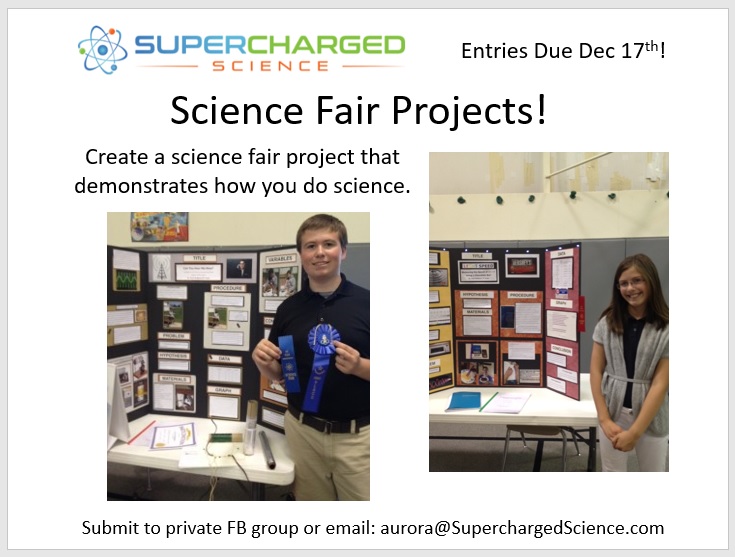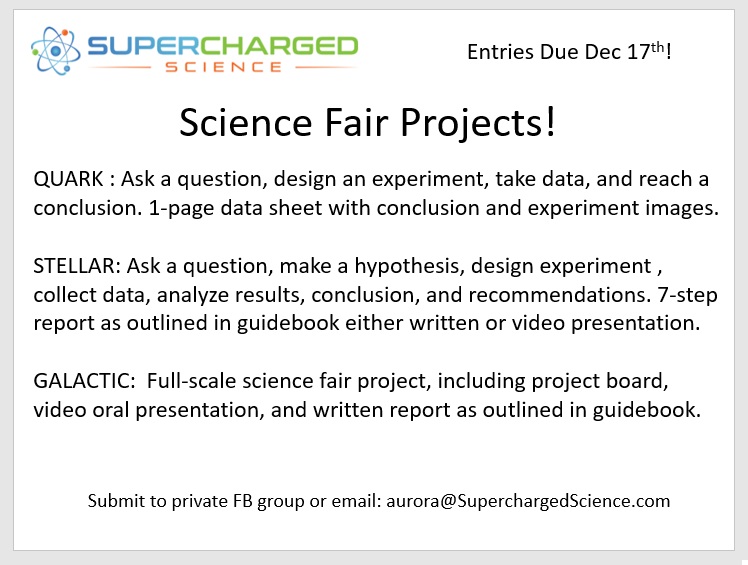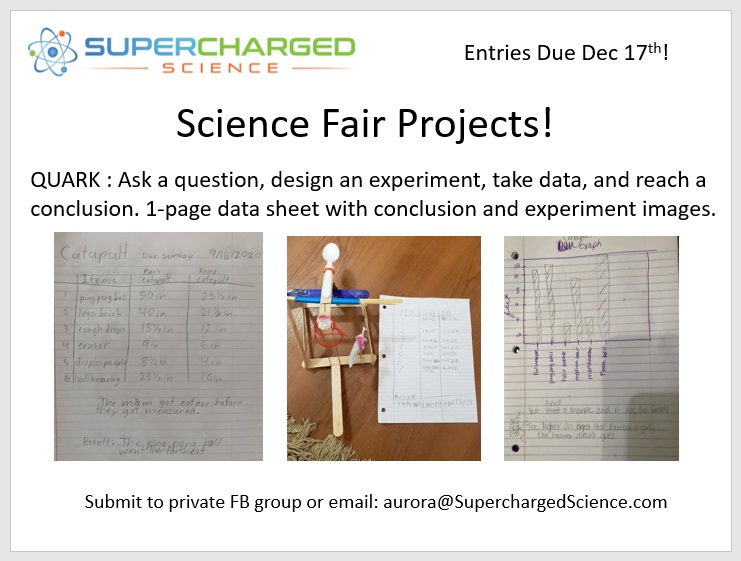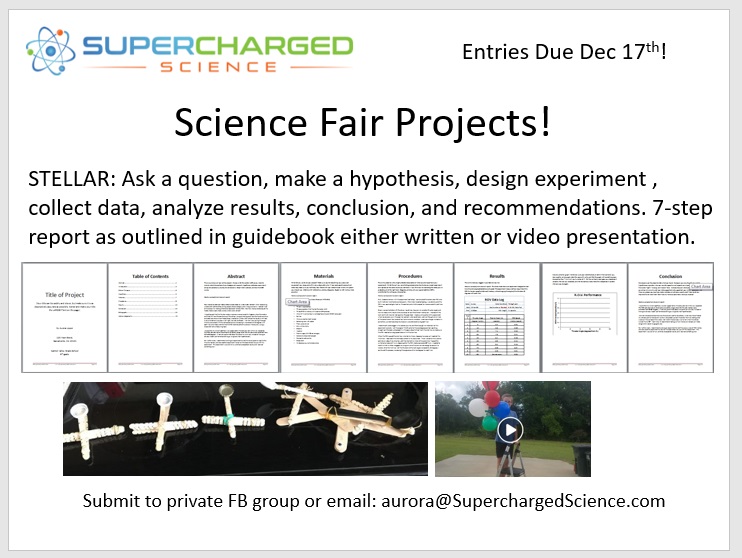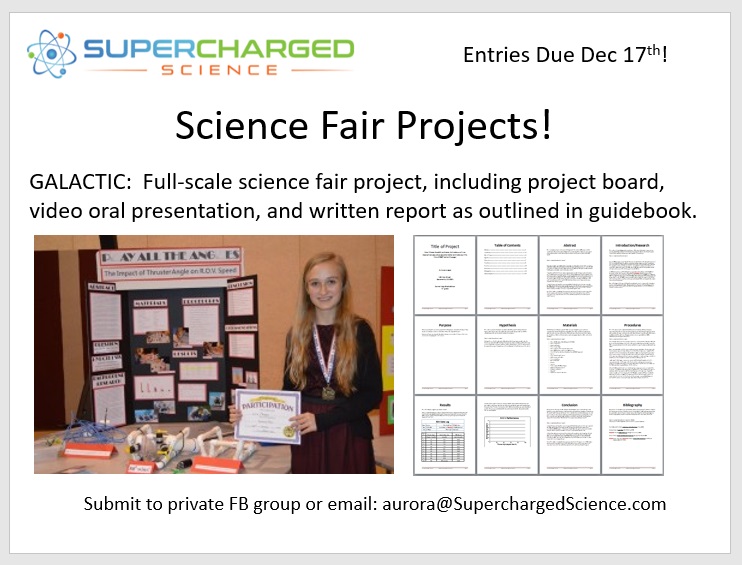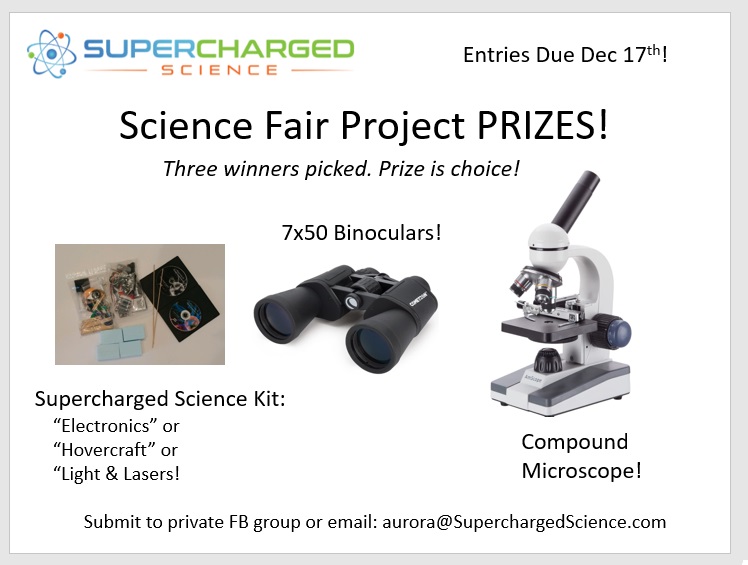Week 10: Properties of Light: Frequency, Wavelength, Spectrum and Color
Discover the mysteriously wild and weird properties of light as you learn about intensity, wavelength, color and more. Kids will be experimenting with rainbow shadows, optical illusions, liquid prisms, and go on black light treasure hunts! Be sure to download the experiment list for this month, as there are so many to choose from! (This week covers Unit 9: Module 1.)
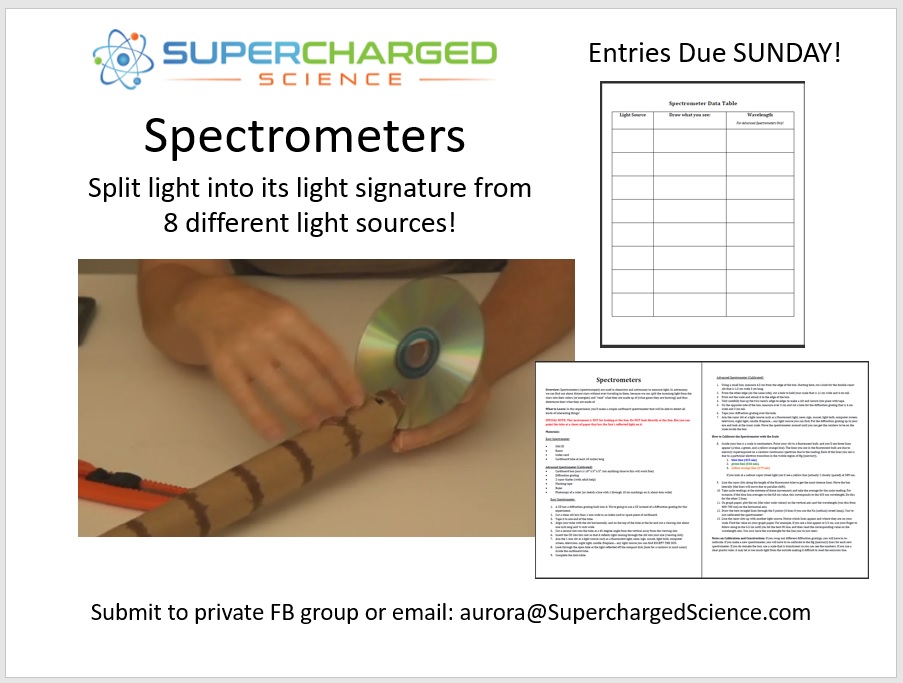
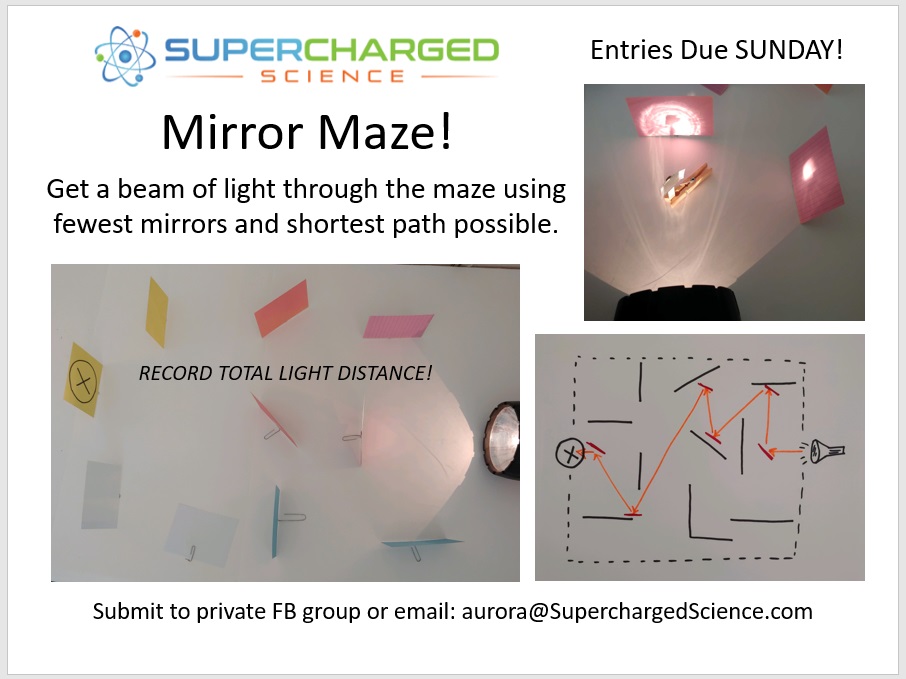
Week 11: Lasers: Absorption, Refraction, Diffraction
We are going to discover the amazing world of light by creating laser light shows, laser mazes, measuring the width of your hair, and so much more! Be sure to look at the light experiment document for the names of the experiments you can do for this week. There's two additional bonus labs not included in that document - find those by clicking the green buttons below. (HINT: The Laser Light Show in the Experiment PDF is the advanced version, if you'd like to make the EASY version, use the link below.)
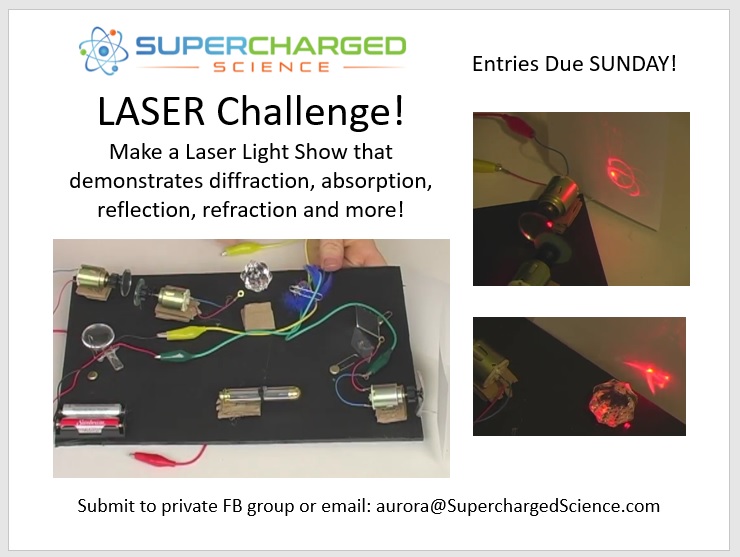
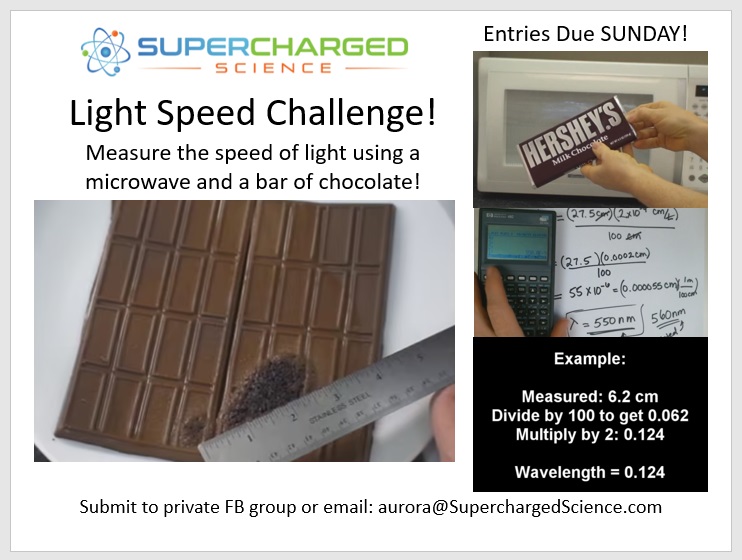
Week 12: Lenses, Optics, Eyes
Investigate the amazing world of light by discovering polarization, infrared photography, converging and diverging lenses! You'll get to build an eye-balloon, laser microscope, and two different kids of telescopes in our classes this week. If you're making the Starburst Kaleidoscope, find adhesive mirror sheets here.

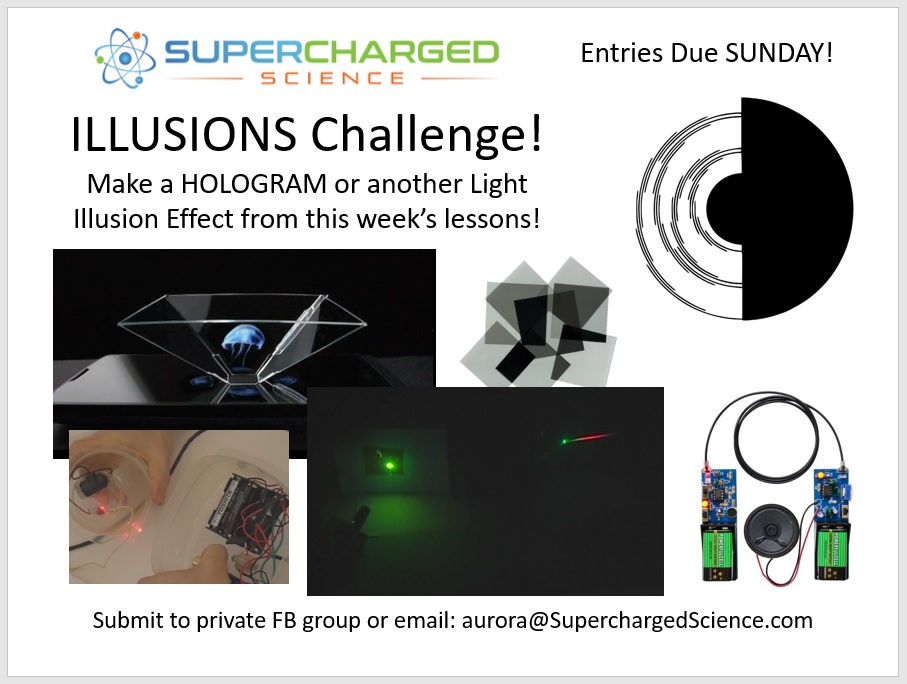
Exploring Fluorescence using a Laser
If you’ve ever wondered how glow in the dark toys stay bright even in the dark, this activity is just for you! When light hits a material, it’s either reflected, transmitted, or absorbed as we discovered with the gummy bear activity earlier. However, certain materials will absorb one wavelength and emit an entirely different wavelength, and when this happens it’s called “fluorescence”. Let’s do an experiment first, and then we’ll go over why it does what it does. Click the button below to be taken to the experiment!
Making a Science Lab Worksheet
How do you create a science lesson worksheet that really captures what you're trying to do with your lessons? When I taught mechanical engineering at Cal Poly state university, one of the big things that students struggled with was creating their own data tables, because they had relied on other people / textbooks / teachers to always provide them with a "worksheet" to go with their "lab".
This means that they never developed the ability to generate their own work. What's worse, they didn't really understand how to think like a scientist. And that's something you can start doing now, no matter how old/young your kids are!
There's really nothing magical about a science worksheet or data tables. You don't need a "printable" or anything fancy. These data tables and worksheets are actually just an expression of what naturally comes out of your science experiment. And the whole point to doing an experiment is to answer a question.
So we start with a question, and we make sure it's something we can design an experiment around it, so it has to be answerable with something that is measurable. The rest is really very easy!
The ideas in the video here are taken from my college-level lab reports that we had students turn in at the end of a standard three-hour experiment. This format has been adjusted to hone in on the essential things you must have to make it a real science lab data sheet.
Stargazing and Aurora's NEW BOOK!
Thank you to EVERYONE who has helped me along my science adventure over the years! I did an astronomy and star gazing event to kick off things on Monday Sept 13th, the night before my book was released!
In case you missed it, you can still participate no matter where you are in the world. You'll even get to meet Brian on Monday during our star gazing event. He is the astronomer who took the astrophotography images in the stargazing section of my book. He'll be showing you the night sky through the exact same telescope that took those images in your book! Here's the link for the book: www.AstronomyByAurora.com
Science Fair Projects!
Supercharged Science is holding a Science Fair and you are invite to participate! The whole point of doing a science fair project is to learn how to ask scientific questions, design experiments to get those questions answered, and stay curious and excited about the world we live in! There are three different levels of the Science Fair that you may enter in. Click the links below for the guidebook and the guidelines for our Science Fair.
What IS a Science Fair Project? (...and what doesn't count as a science fair project?)
It's easy to get lost in the sea of options and expectations people have around science fairs and the projects students may do. If you've ever felt hesitation for getting involved, then watch this video - it's for you. Let's chat about the expectations we have for our Science Fair, and how easy it is to get started without any hesitation or hassle.
